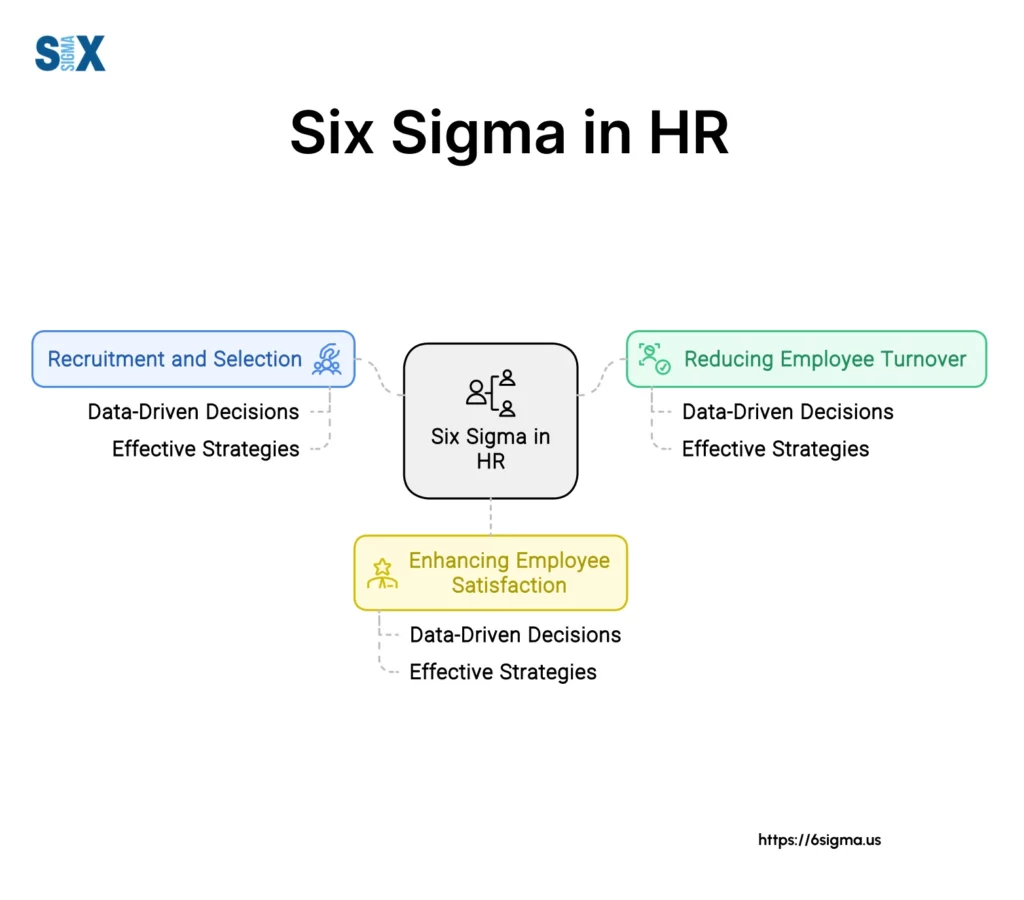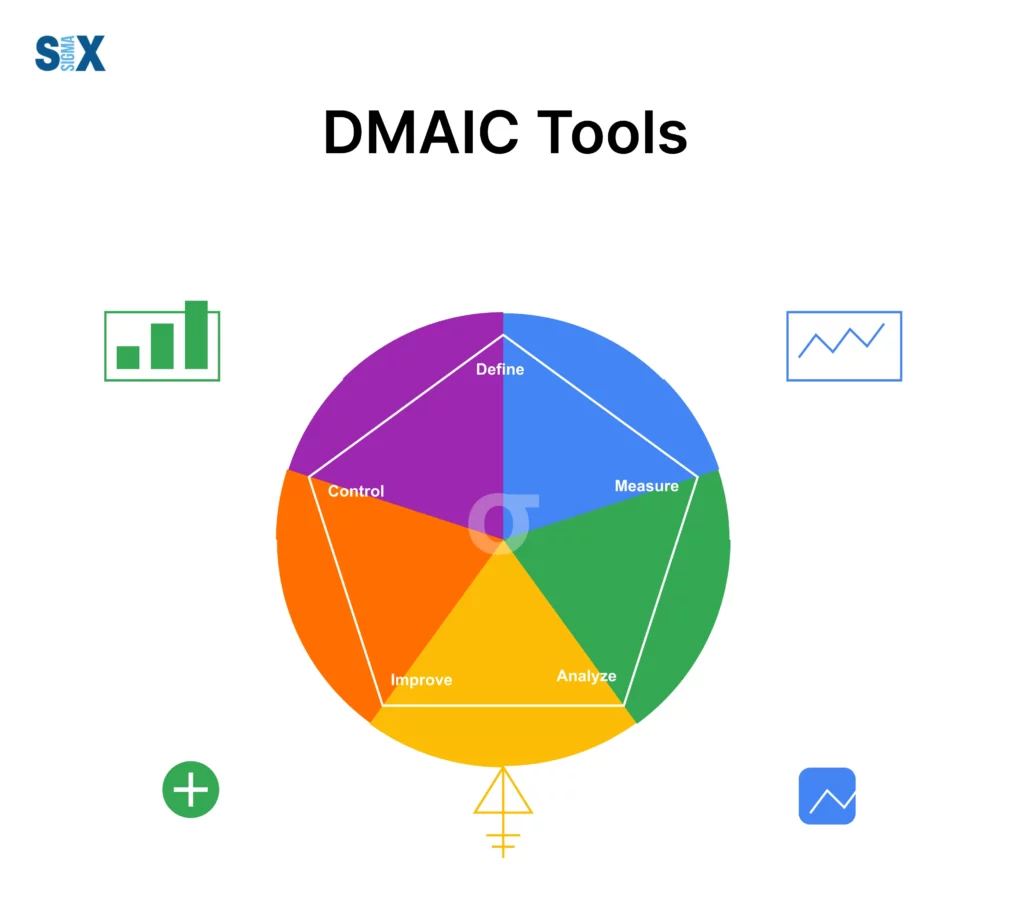Six Sigma in HR: Transforming Processes for Operational Excellence
Six Sigma in HR circles progress through refinement, leveraging evidence and statistics to expose flaws, refine coordination and strengthen service excellence overall.
Six Sigma historically rooted in manufacturing and engineering, yet its principles and methods stretch broadly – including human coordination stewardship.
Key Highlights
- Understanding the Six Sigma in HR processes
- Exploring the benefits of Six Sigma in HR
- Examining the applications of Six Sigma across various HR functions
- Implementing Six Sigma in HR: The DMAIC
- Addressing challenges and considerations
- Building a Six Sigma culture in HR
- Success stories and case studies
- The future of Six Sigma in HR
What defines Six Sigma Progress?
Six Sigma describes an understanding-led, principled methodology enhancing process quality and efficiency. It targets defect lessening and upgrading through thoughtful navigation.
“Six Sigma” refers to performance measurements, where the standard deviation expresses natural process flux.
For continual progress-pursuers committed to performance and relationships uplift through shared challenges overcome, Six Sigma emerges a prudent companion.
Benefits of Six Sigma in HR
Implementing Six Sigma in human resources (HR) can yield numerous benefits for organizations, including:
- Improved quality of HR processes: By identifying and eliminating defects and variability, Six Sigma can enhance the overall quality of HR services, such as recruitment, onboarding, performance management, and employee development.
- Increased efficiency and cost savings: Helps streamline HR processes, reduce cycle times, and eliminate waste, resulting in increased operational efficiency and cost savings.
- Data-driven decision-making: Six Sigma relies on data-driven decision-making, ensuring that HR decisions are based on factual evidence and statistical analyses rather than assumptions or subjective opinions.
- Employee satisfaction and engagement: By addressing employee concerns and improving HR processes, Six Sigma can lead to increased employee satisfaction, engagement, and retention.
- Alignment with business objectives: These methodologies enable HR professionals to align their processes with the organization’s strategic goals and objectives, contributing to overall business success.

Applications of Six Sigma in HR Processes
Organizations can leverage Six Sigma to optimize their recruitment processes and attract top talent.
By applying Six Sigma techniques, HR professionals can:
- Streamline the recruitment process: Identify and eliminate non-value-added activities, redundancies, and bottlenecks, resulting in a more efficient and streamlined recruitment process.
- Reduce time-to-hire: Analyze and improve cycle times, minimizing delays in the hiring process and ensuring that qualified candidates are brought on board promptly.
- Improve candidate quality: Develop data-driven candidate evaluation criteria and methods, ensuring that the most suitable candidates are selected for the job.
- Reduce candidate drop-off rates: Analyze and address factors contributing to candidates withdrawing from the hiring process, improving the overall candidate experience and retention.
Onboarding and Orientation
A well-designed onboarding and orientation program can significantly impact employee productivity, engagement, and retention.
Six Sigma can help organizations:
- Standardize the onboarding process: Develop a consistent and structured onboarding program, ensuring that all new hires receive a uniform and comprehensive introduction to the company, its culture, and their roles.
- Reduce time-to-productivity: By streamlining the onboarding process and providing effective training, Six Sigma can help minimize the time it takes for new employees to become fully productive.
- Improve employee retention: A structured and efficient onboarding process can enhance the employee experience, increase job satisfaction, and reduce turnover rates.
Training and Development
Effective training and development programs are crucial for building a skilled and competent workforce. Six Sigma can be leveraged to:
- Design effective training programs: Analyze training needs, identify gaps, and develop structured training programs that align with organizational goals and employee development needs.
- Increase training effectiveness: Evaluate the impact and effectiveness of training programs through data analysis and continuous improvement efforts, ensuring that training initiatives deliver the desired results.
- Reduce training costs: Streamline training processes, eliminate redundancies, and optimize resource allocation, resulting in cost savings while maintaining high-quality training.
Performance Management
A fair and transparent performance management system is essential for employee motivation, development, and organizational success.
Six Sigma can help HR professionals:
- Establish a fair and transparent evaluation system: Develop objective and data-driven performance evaluation criteria, ensuring consistency and minimizing bias in the evaluation process.
- Reduce performance variability: Identify and address factors contributing to performance variations, enabling organizations to maintain consistent performance standards across the workforce.
- Align with organizational goals: Design performance management processes that are aligned with the organization’s strategic objectives, ensuring that employee efforts are focused on achieving these goals.
Employee Engagement
Engaged employees are more productive, motivated, and committed to their organization’s success.
Six Sigma can assist HR professionals in:
- Identifying engagement drivers: Analyze employee feedback, survey data, and other relevant metrics to identify factors that influence employee engagement, such as communication, recognition, and work-life balance.
- Improving communication and recognition: Develop strategies and processes to enhance communication channels and implement effective recognition programs, fostering a positive and supportive work environment.
- Fostering a continuous improvement culture: Encourage employee involvement in process improvement initiatives, promoting a culture of continuous learning and growth within the organization.
Implementing Six Sigma in HR
DMAIC Methodology
The DMAIC (Define, Measure, Analyze, Improve, Control) methodology is a structured problem-solving approach that forms the backbone of Six Sigma implementation. The five phases of DMAIC are:

- Define: Clearly define the problem, process, or opportunity for improvement, and establish project goals and objectives.
- Measure: Collect relevant data and establish baselines to understand the current state of the process or problem.
- Analyze: Analyze the data to identify root causes, patterns, and relationships that contribute to the problem or inefficiency.
- Improve: Develop and implement solutions to address the identified root causes and improve the process.
- Control: Establish control measures to monitor and sustain the improvements, ensuring that the process remains stable and consistent over time.
Six Sigma Tools and Techniques
Six Sigma offers a range of powerful tools and techniques that can be applied to HR processes, including:
- Process mapping: Visualize and understand the flow of HR processes, identify bottlenecks, and pinpoint areas for improvement.
- Root cause analysis: Utilize techniques such as fishbone diagrams, 5 Whys, and cause-and-effect analysis to identify the underlying root causes of problems or inefficiencies.
- Pareto charts: Prioritize improvement efforts by identifying the most significant factors contributing to a problem or defect.
- Statistical process control (SPC): Monitor and control HR processes using control charts, enabling proactive identification and prevention of process variations.
Challenges and Considerations
While Six Sigma can bring significant benefits to HR processes, organizations must be aware of potential challenges and considerations, including:
- Data availability and quality: Implementing Six Sigma relies on the availability and quality of data, which can be a challenge in some HR processes.
- Resistance to change: Introducing new methodologies and processes may face resistance from employees accustomed to traditional ways of working.
- Lack of expertise and training: Successful implementation requires specialized training and expertise, which may not be readily available within the HR department.
- Cultural fit and buy-in: Achieving organization-wide buy-in and fostering a culture of continuous improvement is crucial for the effective adoption of Six Sigma principles.
Building a Six Sigma Culture in HR
Establishing a Six Sigma culture within HR requires strong leadership commitment and support from the top management.
Key steps include:
- Executive sponsorship: Secure executive-level sponsorship and commitment to the Six Sigma initiative, providing the necessary resources and support for its successful implementation.
- Competency models for Six Sigma roles: Develop competency models, such as Black Belts and Green Belts, to ensure that the right individuals are selected and trained to lead process improvement efforts.
Employee Training and Development
Investing in employee training and development is crucial for building a Six Sigma culture within HR. This includes:
- Yellow Belt, Green Belt, and Black Belt certifications: Provide comprehensive training and certification programs for employees at various levels, equipping them with the knowledge and skills necessary for Six Sigma implementation.
- Continuous learning and improvement: Foster a culture of continuous learning and improvement by encouraging employees to participate in training programs, share best practices, and contribute to process improvement initiatives.
Success Stories and Case Studies
Several leading organizations have successfully implemented Six Sigma in their HR processes, reaping significant benefits:
- Motorola: As one of the pioneers of Six Sigma, Motorola applied the methodology to streamline its HR processes, resulting in improved efficiency, cost savings, and enhanced employee satisfaction.
- General Electric (GE): GE’s successful implementation of Six Sigma in HR processes, such as recruitment and performance management, contributed to its reputation as a leader in operational excellence.
- Examples from various industries: Organizations across sectors, including healthcare, finance, and technology, have leveraged Six Sigma to optimize HR processes, improve employee engagement, and drive operational excellence.
Conclusion
Six Sigma emerges as a potent progress catalyst within human coordination, driving organizational flourishing.
Embracing evidence-led stewardship while advocating learning and advancement spirits, HR initiatives spread further through business alignment. Benefits include:
Elevated efficiency and quality as methodologies streamline cooperation, reduce wasted efforts, and strengthen service excellence overall.
Understanding-guided choices since facts and statistics empower prudent navigation.
The habit of progressive refinement empowering proactive challenge-meeting and opportunity-welcoming wherever complexity interconnects.
Progress Pathways Ahead
Six Sigma adapts yet integrates emerging abilities: insights, projections, and understanding-led guidance multiply through sophisticated analytics, machine awareness, and artificial cleverness.
Evolving workforce realities require lithe coordination – talents’ gifts unlocked and partnerships upheld through constant change.
In summary, Six Sigma offers a potent framework for unlocking talents’ fullest gifts and achieving advantages sustainable through cooperative challenges.
By embracing such progress spirit and seasoned companions’ insights, organizations unleash potential and quality relationships for journeys shared.
SixSigma.us offers both Live Virtual classes as well as Online Self-Paced training. Most option includes access to the same great Master Black Belt instructors that teach our World Class in-person sessions. Sign-up today!
Virtual Classroom Training Programs Self-Paced Online Training Programs






